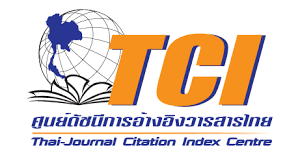Enhanced corrosion resistance of hard steel wires produced by Electrochemical Cold Drawing
Keywords:
FeSi6.5 steel, Electrochemical cold drawing, Anodic polarization, Corrosion resistanceAbstract
The corrosion resistance of AISI 1070 and FeSi6.5 steel wires produced by conventional cold drawing (CD) and electrochemical cold drawing (ECD) technologies were compared. The corrosion rate of steel wire FeSi6.5, obtained by the method of ECD, was lower than that of the wire obtained by the method of CD, while this difference for steel AISI 1070 was not pronounced. The main reason can be explained by the fact that the ECD technology has significantly reduced surface defects and residual stress in steel wires FeSi6.5, and, thus, increased the corrosion resistance. However, for steel wire 1070, the initial smooth surface and the microstructure of severe deformation were the dominant factors affecting the corrosion rate, and since the proportion of the positive effect that improves the corrosion resistance was reduced, there was therefore no obvious difference between the two technologies. Surface condition and internal stress were the main factors affecting the corrosion rate. ECD demonstrated an important effect on the promotion of plastic deformation and improvement of surface quality, and, therefore, was a promising technology for improving the formability of hard steels.Downloads
References
A. Robin, G. A. S. Martinez, and P. A. Suzuki, “Effect of cold-working process on corrosion behavior of copper,” Materials & Design, vol. 34, pp. 319-324, 2012.
Y. Hou, Y. Li, C. Zhang, Y. Koizumi, and A. Chiba, “Effects of cold working on corrosion resistance of Co-modified Ni–16Cr–15Mo alloy in hydrofluoric acid solution,” Corrosion Science, vol. 89, pp. 258-267, 2014.
L. Jinlong and L. Hongyun, “The effects of cold rolling temperature on corrosion resistance of pure iron,” Applied Surface Science, vol. 317, pp. 125-130, 2014.
E. N. Andrade, “Surface effect and structure of single crystal wires,” Nature, vol. 164, pp. 536- 537, 1949.
R. W. Revie and H. H. Uhlig, “Effect of applied potential and surface dissolution on the creep behavior of copper,” Acta Metallurgica, vol. 22, pp. 619-627, 1974.
H. H. Uhlig, “Effect of surface dissolution on plastic deformation of iron and steel,” Journal of the Electrochemical Society, vol. 123, pp. 1699-1701, 1976.
E. M. Gutman, “Mechanochemistry of Solid Surfaces,” New Jersey: World Scientific Publishing, 1994.
E. M. Gutman, Ya. B Unigovski, Z. Koren, and B. Borohov, “Electrochemically enhanced plasticity of steels,” Journal of Metals, Materials and Minerals, vol. 22, pp. 137-140, 2012.
Ya. B. Unigovski, E. M. Gutman, Z. Koren, T. Poryadkov, and H. Rosenson, “Corrosion creep of metals”, Journal of Physics: Conference Series, vol. 98, pp. 1-6, 2008.
E. M. Gutman, Ya. B. Unigovski, R. Shneck, F. Ye, and Y. Liang, “Electrochemically enhanced surface plasticity of steels, Applied Surface Science, vol. 388, pp. 49-56, 2016.
H. Guo, B. Lu, and J. Luo, “Response of surface mechanical properties to electrochemical dissolution determined by in situ nanoindentation technique,” Electrochemistry communications, vol. 8, pp. 1092-1098, 2006.
Q. Wan and D. J. Quesnel, “Effects of NaCl, pH, and potential on the static creep behavior of AA1100,” Metallurgical and Materials Transactions A, vol. 44, pp. 1311-1319, 2013.
L. L. Li, T. J. Chen, S. Q. Zhang, and F. Y. Yan, “Electrochemical cold drawing of in situ Mg2Sip/AM60B composite: A comparison with the AM60B alloy,” Journal of Materials Processing Technology, vol. 240, pp. 33-41, 2017.
H. Li, Y. F. Liang, W. Yang, F. Ye, J. P. Lin, and J. X. Xie, “Disordering induced work softening of Fe–6.5wt%Si alloy during warm deformation,” Materials Science and Engineering: A, vol. 628, pp. 262-268, 2015.
A. J. Wilkinson, “Measurement of elastic strains and small lattice rotations using electron back scatter diffraction,” Ultramicroscopy, vol. 62, pp. 237-247, 1996.
A. J. Wilkinson, G. Meaden, and D. J. Dingley, “High-resolution elastic strain measurement from electron backscatter diffraction patterns: new levels of sensitivity,” Ultramicroscopy, vol. 106, pp. 307-313, 2006.
X. Li, F. Xie, D. Wang, C. Xu, M. Wu, D. Sun, and J. Qi, “Effect of residual and external stress on corrosion behaviour of X80 pipeline steel in sulphate-reducing bacteria environment,” Engineering Failure Analysis, vol. 91, pp. 275- 290, 2018.
T. Hosaka, S. Yoshihara, I. Amanina, and B. J. MacDonald, “Influence of Grain Refinement and Residual Stress on Corrosion Behavior of AZ31 Magnesium Alloy Processed by ECAP in RPMI-1640 Medium,” Procedia Engineering, vol. 184, pp. 432-441, 2017.
Xu L.Y., Cheng Y. F., “An experimental investigation of corrosion of X100 pipeline steel under uniaxial elastic stress in a nearneutral pH solution,” Corrosion Science, vol. 59, pp. 103-109, 2012.
B. I. Kolodii, “Theoretical investigation of the interaction of a deformed metal with a corrosion medium,” Materials Science, vol. 36, pp. 884-891, 2000.
T. Hong and M. Nagumo, “Roughness and pitting corrosion of 301STS,” Corrosion Science, vol. 39, pp. 1665-1672, 1997.
K. Sasaki and G. T. Burstein, “The generation of surface roughness during slurry erosioncorrosion and its effect on the pitting potential,” Corrosion Science, vol. 38, pp. 2111-2120, 1996.
S. M. Lee, W. G. Lee, Y. H. Kim, and H. Jang, “Surface roughness and the corrosion resistance of 21Cr ferritic stainless steel,” Corrosion Science, vol. 63, pp. 404-409, 2012.
W. Li and D.Y. Li, “Influence of surface morphology on corrosion and electronic behavior,” Acta Materialia, vol. 54, pp. 445- 452, 2006.
S. Xiang, Y. He, W. Shi, X. Ji, Y. Tan, J. Liu, and R. G. Ballinger, “Chloride-induced corrosion behavior of cold-drawn pearlitic steel wires,” Corrosion Science, vol. 141, pp. 221-229, 2018.
Downloads
Published
How to Cite
Issue
Section
License
Copyright (c) 2019 Journal of Metals, Materials and Minerals

This work is licensed under a Creative Commons Attribution-NonCommercial-NoDerivatives 4.0 International License.
Authors who publish in this journal agree to the following terms:
- Authors retain copyright and grant the journal right of first publication with the work simultaneously licensed under a Creative Commons Attribution License that allows others to share the work with an acknowledgment of the work's authorship and initial publication in this journal.
- Authors are able to enter into separate, additional contractual arrangements for the non-exclusive distribution of the journal's published version of the work (e.g., post it to an institutional repository or publish it in a book), with an acknowledgment of its initial publication in this journal.








